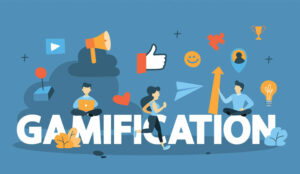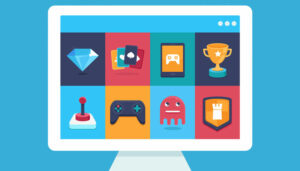With more employees working from home than ever before, contact centre leaders have had to rethink how they maintain business as usual and continue driving toward organizational goals.
In this new environment, gamification has emerged as a critical way of ensuring employee productivity and engagement.
Contact centre employees who made an overnight transition to working from home faced a number of roadblocks to their usual ways of working.
New distractions, such as children, pets and other family members who are in the home during the workday, vie for employees’ attention. And while in the past employees might have simply walked over to a co-worker’s or supervisor’s desk to ask a question, share an update or ask how they’re doing, those interactions aren’t possible any more.
There’s no opportunity for impromptu watercooler conversations or catch-up time over a cup of coffee. Every communication and meeting must be scheduled ahead of time, and when communication becomes difficult, people tend to avoid it.
That can leave workers disconnected from their peers and the organization’s goals and vision; according to a study from Workplace by Facebook, only 14% of remote employees feel connected to headquarters and the leadership team.
Workers who feel disconnected from their workplace are typically less engaged and therefore less productive. Organizations with a high level of engagement report 22% higher productivity in addition to lower absenteeism and turnover, Gallup has found.
How Contact Centres Are Leveraging Gamification
Gamification is the application of game-design elements and game principles in non-game contexts. It’s similar to when you wear a Fitbit or Apple Watch; gathering those points or receiving a digital reward when meeting a step goal or other activity target is motivating.
In the contact centre, gamification involves using activities and processes with game elements, such as pursuits, quests, and other gaming exercises, with usually multiple levels and potentially some collaboration elements, that can come with points and rewards, to help employees solve problems or increase their capabilities.
Studies have found that gamification drives intrinsic motivation and feelings of autonomy and competency among employees. In addition, 83% of employees surveyed in a recent report said that gamification makes them feel more motivated, and 61% who had not received gamified training said they feel bored and unproductive.
Gamification drives employee productivity and engagement in four key ways:
- Focus. Interactive activities are broken down into levels that address specific KPIs and keep employees concentrated and task-driven. Typically, gamified elements are split into smaller objectives that feel achievable, which is an important element of training given employees’ new, distraction-filled work environments. Employees earn badges or rewards as they complete tasks, and incremental work improvements help them feel mastery of key skills.
- Learning. With many employees being onboarded remotely, it can be a struggle to ensure that they’re learning the most crucial skills for their positions. Game elements like targeted trivia sessions allow contact centres to track how new and existing employees are improving and provide additional training as needed. The sessions can be designed in a way that allows managers and supervisors to target the areas employees need to focus on most. It’s also great for existing employees to learn new materials or processes.
- Motivation. When employees reach a gamification objective or answer trivia questions correctly, they can earn points that can be used to make purchases in a rewards marketplace. The more they participate in gamified training, the more points they earn to purchase fun perks. Supervisors can track improvements toward targeted KPIs along the way. The leaderboards and badges that are earned also create a competitive spirit among teams and peers, further motivating individuals to successfully complete the activities.
- Engagement. Completing work in a fun and captivating way helps employees set aside distractions at home. Gamification increases engagement, which Gallup found leads to a 41% reduction in absenteeism and a 17% increase in productivity.
Each of these benefits contributes to more productive employees and adds substantial value to the contact centre’s bottom line. A productive and engaged employee can contribute as much as $9,880 in additional value annually over a less productive, less engaged employee.
Lack of performance and engagement also contributes to the fact that, on average, most contact centres face 40% turnover. In a contact centre with 2,000 employees, for example, reduced engagement and productivity could cost as much as $3.2 million each year.
Everybody Wins With Gamification
By adding gamification to a contact centre’s repertoire of training and engagement programmes, contact centres can achieve higher levels of productivity and empower remote employees to engage with work in a fun and rewarding way.
Author: Robyn Coppell
Published On: 6th Jul 2020 - Last modified: 7th Jul 2020
Read more about - Guest Blogs, NiCE
















